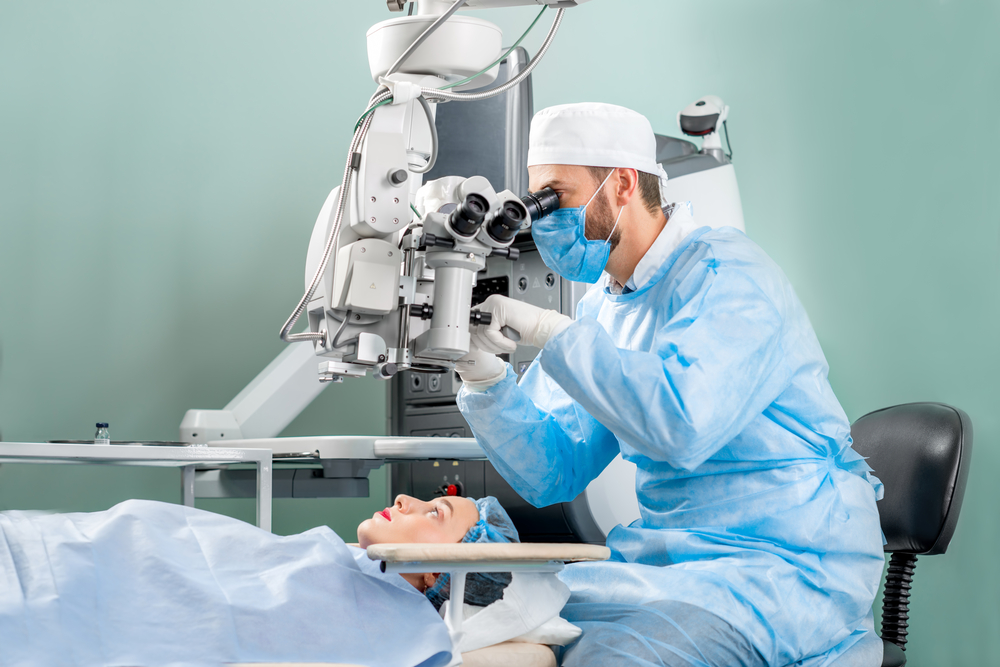
When you develop a cataract on top of astigmatism, it's like adding insult to injury. The cataract's cloudiness compounds the blurring caused by the irregular corneal shape. Addressing both cataracts and astigmatism is crucial for restoring your quality of vision. Ignoring these conditions can lead to a progressive decline in your sight, impacting your independence and quality of life. Recognizing the symptoms early and consulting with an ophthalmologist can set you on the path to recovery.
Understanding Astigmatism and Cataract
Astigmatism is a refractive error, much like nearsightedness or farsightedness, but with its unique characteristics. Imagine the surface of your eye, the cornea, should ideally have a symmetrically round shape like a basketball. In astigmatism, however, the cornea has an irregular shape, more like a football. This irregularity causes light to focus on multiple points in your eye, leading to blurred or distorted vision. It can occur in varying degrees, and if you have it, you might experience headaches, eye strain, or difficulty seeing at night.
A cataract is the clouding of the eye's natural lens, which sits behind the iris and pupil. The lens works much like a camera lens, focusing light onto the retina for clear vision. But over time, the proteins that make up your lens can clump together, clouding this once-clear lens and leading to a cataract. This clouding can make your vision appear as though you're looking through a foggy window, diminishing the vividness and sharpness of your sight.
Interestingly, astigmatism and cataracts often go hand in hand, particularly as you age. While they are distinct conditions, their combined effects can compound your visual impairment. If you have astigmatism, developing cataracts can further degrade the quality of your vision, making routine tasks more challenging. But there's good news on the horizon, as modern cataract surgery offers solutions for both conditions simultaneously.
What is Cataract Surgery?
Cataract surgery is a common and generally safe procedure to restore vision. During the surgery, your eye surgeon will remove the cloudy lens and replace it with a clear, artificial lens known as an intraocular lens (IOL). This surgery is typically performed on an outpatient basis and is one of the most successful and life-enhancing surgical procedures available.
Over the years, cataract surgery has evolved significantly. What once involved a lengthy hospital stay and a high risk of complications has transformed into a quick, minimally invasive procedure. Advances in technology have refined the techniques used, making it a surgery with a high success rate and relatively low risk of complications.
Preparing for cataract surgery involves a thorough eye examination to determine the extent of the cataract and any other eye conditions, including astigmatism. Your eye doctor will take detailed measurements of your eye to choose the correct power for the IOL. You'll be advised on the do's and don'ts before the surgery, and you may be prescribed medicated eye drops to reduce the risk of infection.
The Role of Toric IOLs in Cataract Surgery for Correcting Astigmatism
Toric IOLs are a game-changer for individuals with astigmatism undergoing cataract surgery. Unlike standard IOLs, toric lenses are specifically designed to correct astigmatism. They have different powers in various meridians of the lens to compensate for the irregular shape of the cornea, effectively reducing or eliminating the refractive error.
The use of toric IOLs in cataract surgery for correcting astigmatism means that you can look forward to a significant improvement in your vision. In many cases, patients experience a dramatic reduction in their dependence on glasses or contact lenses for distance vision post-surgery. For someone used to dealing with the daily hassles of corrective eyewear, this is a profound change.
Schedule Your Consultation with North Texas Ophthalmology Associates Today
Treating astigmatism with cataract surgery has the potential to transform your vision. By addressing both conditions simultaneously, you stand to regain not just the clarity of your sight but also the freedom from glasses or contacts that you might have thought was lost forever.
For further guidance on cataract surgery or to schedule a consultation with our ophthalmologist, visit North Texas Ophthalmology Associates in Wichita Falls, Texas, or call (940) 240-8400 to book an appointment.








